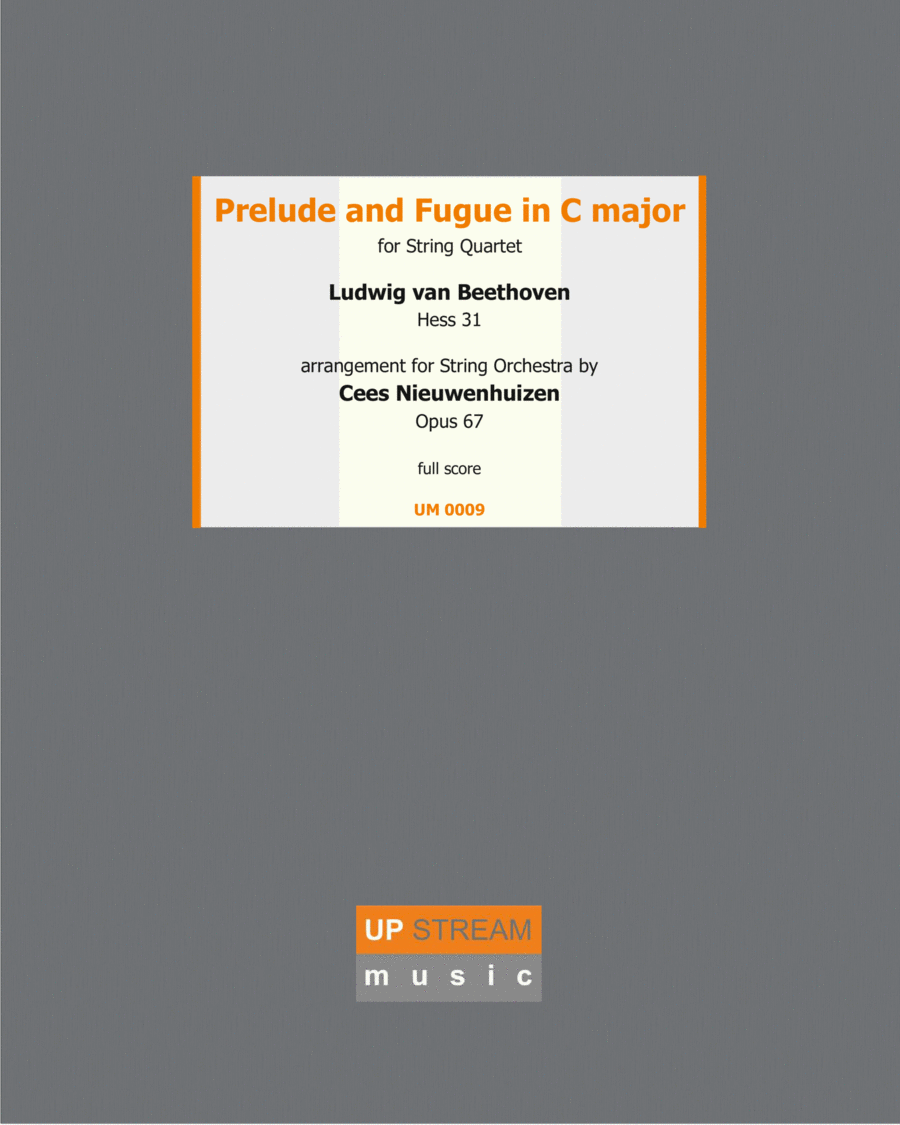String Orchestra - Digital Download SKU: A0.933524 Composed by Ludwig van Beethoven, Cees Nieuwenhuizen. Arranged by Upstream Music. Classical. Score and parts. 24 pages. Upstream Music #6353319. Published by Upstream Music (A0.933524). The Prelude and Fugue in C major were created during the period of study with Johann Georg Albrechtsberger, who lived from February 3, 1736 to March 7, 1809. Albrechtsberger was an Austrian theoretician and pedagogue of music, an organist, as well as a composer. He entered upon his career early as a choirboy in the choir of the monastery of Melk, Austria. There he was discovered by the crown prince, the later emperor Joseph II. The latter facilitated an appointment as the court organist.Later Albrechtsberger became conductor of the chapel choir of the famous Stephansdom in Vienna. Albrechtsberger was a highly praised pedagogue; Beethoven, too, was among his pupils. It was this composer that studied with Albrechtsberger from January 1794 to March/May 1795. Together with Beethoven, Albrechtsberger researched all forms of the counterpoint, which is most manifest in the large number of exercises passed down; over 300 studies, fugues etc. have been preserved with corrections and alterations by Albrechtsberger. During this period of study, greater works were also composed, such as the Dona Nobis Pacem (Hess A57), the Prelude and Fugue in E minor (Hess 29), the Prelude and Fugue in F major (Hess 30) and the present one in C major (Hess 31). The piece was probably composed in 1794-95; this opus also shows numerous improvements and alterations by his master, although some alterations are by Beethoven himself. The manuscript of the work is to be found in Vienna, and did not appear in print until 1967 for the first time.The present version sticks closely to Beethovenās, but has been provided with a double bass part so as to adapt the work for being performed with a larger strength than for which it was originally written. The strength originally intended by Beethoven was two violins, a viola and a cello, so as a string quartet. With the supplementary bass part, the piece can also be played by a string orchestra, which will no doubt promote its dissemination and familiarity. In a sense, the work is already a preliminary study for the string quartets Opus 18 produced later.Especially the rhythm, melodic forms, and the counterpoint applied, frequently return in these string quartets. Beethoven has hardly indicated any rests in the empty bars; Cees has as yet added them.The phrasing, dynamics and time indications have also been added. Beethoven merely writes down the notes, while we have to accept the fact that various notes have been changed by Albrechtsberger but Beethovenās notes might have been just as interesting. Of some notes it was not clear what Beethoven exactly meant; in such a case, Cees has adhered to the harmonious form, adapting the notes which, logically speaking, fit in with the harmonic unity.
